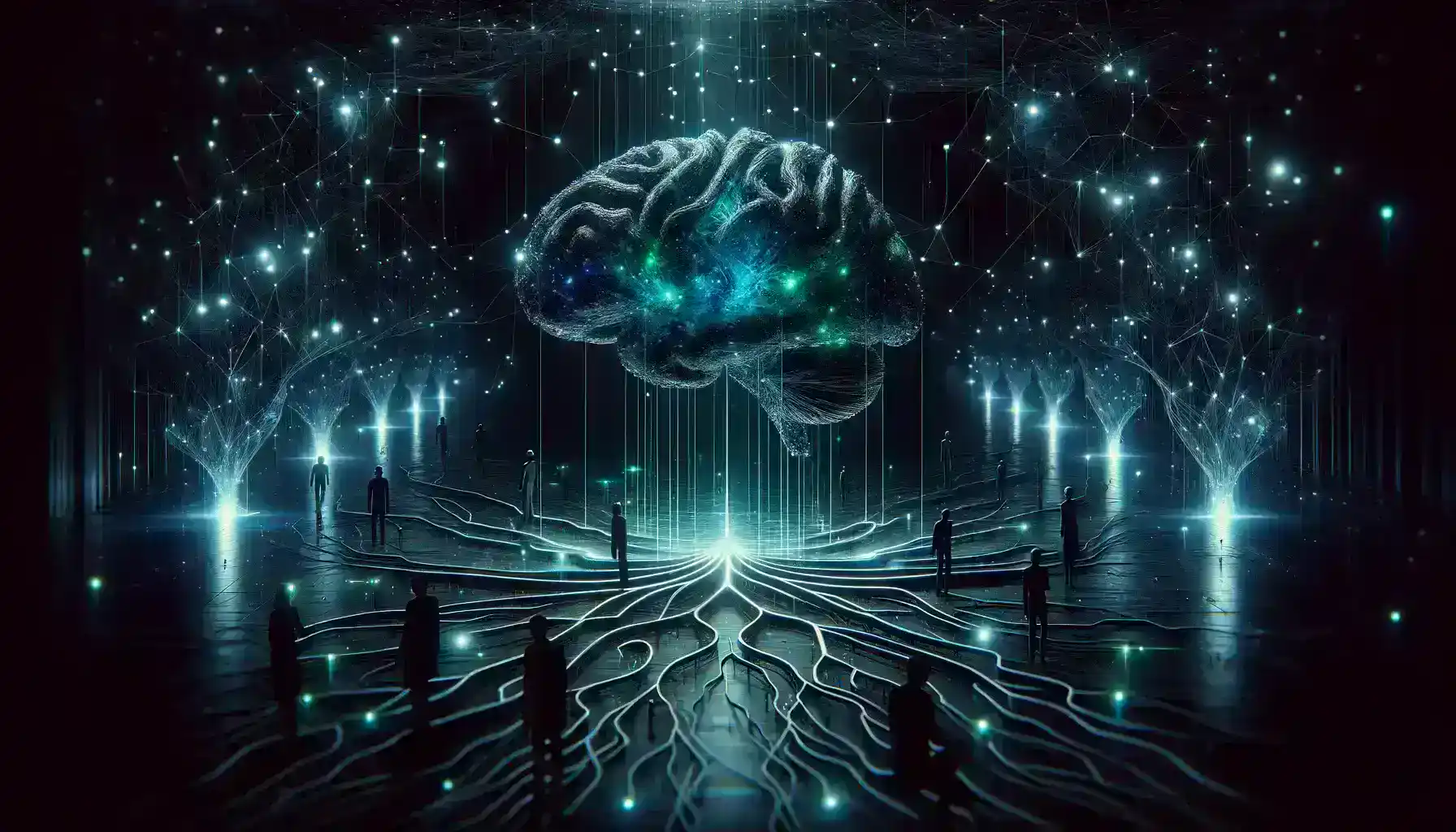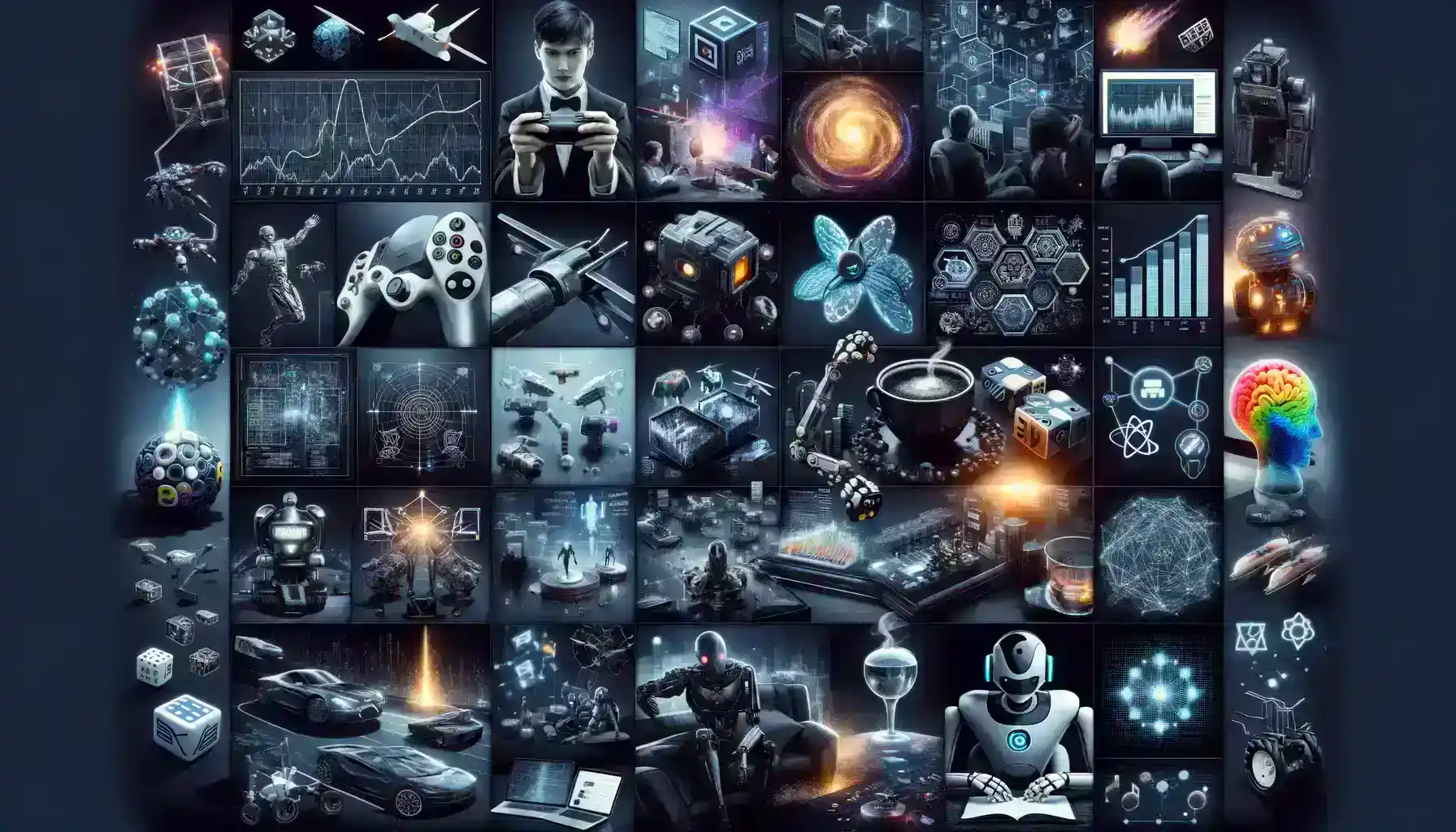Table of Contents
Introduction
In the ever-evolving landscape of artificial intelligence, one of the most captivating frontiers is the intersection of deep learning and reinforcement learning. Deep Reinforcement Learning (DRL) represents a groundbreaking approach to teaching machines not just to understand but to actively learn and make decisions through interaction with their environment. It is a realm where algorithms not only process data but also navigate complex scenarios, adapting and improving their strategies over time.
Imagine a computer system that doesn’t just passively analyze information but actively engages with its surroundings, learning from each action taken and adjusting its behavior accordingly. This is the essence of deep reinforcement learning, a field that has gained remarkable momentum in recent years and holds the promise of unlocking unprecedented capabilities in various domains.
In this blog, we embark on a journey into the heart of deep reinforcement learning, exploring its foundations, applications, and the transformative impact it has on the way machines learn. From training agents to play games at superhuman levels to optimizing complex decision-making processes in industries, the applications of DRL are vast and diverse. Join us as we unravel the layers of this fascinating paradigm, delving into the synergy of deep learning and reinforcement learning that empowers machines to not just compute but to comprehend, strategize, and learn from the interactive world around them.
Understanding Deep Reinforcement Learning

Foundations of Reinforcement Learning
At its core, reinforcement learning is a type of machine learning where an agent learns to make decisions by interacting with an environment. It receives feedback in the form of rewards or penalties, guiding its future actions. The foundations of reinforcement learning lie in the concepts of states, actions, rewards, and policies. States represent the situations the agent perceives, actions are the choices it can make, and the policy dictates the strategy the agent employs to decide its actions.
Deep Learning Integration
What sets Deep Reinforcement Learning apart is the infusion of deep neural networks into the traditional reinforcement learning framework. Deep learning enables the agent to learn complex representations of the environment, allowing it to handle high-dimensional input data, such as images or raw sensor data. This integration empowers the agent to generalize its learning across a wide range of scenarios, a crucial capability for real-world applications.
Q-Learning and Value Functions
In the realm of DRL, Q-Learning plays a pivotal role. The Q-value represents the expected cumulative reward of taking a particular action in a given state. The agent’s objective is to learn an optimal policy that maximizes these Q-values over time. Value functions, both state-value and action-value, are fundamental in quantifying the desirability of different states and actions, steering the learning process towards optimal decision-making.
Exploration vs. Exploitation Dilemma
A key challenge in reinforcement learning is the delicate balance between exploration (trying new actions to discover their effects) and exploitation (choosing actions that are known to yield high rewards). Striking the right balance is crucial for the agent to gather sufficient information about its environment while making decisions that maximize cumulative rewards. Deep reinforcement learning algorithms grapple with this dilemma through various exploration strategies.
Deep Q-Networks (DQN) and Policy Gradient Methods
Deep Q-Networks (DQN) represent a class of algorithms that leverage deep neural networks to approximate the Q-function. On the other hand, policy gradient methods directly optimize the policy of the agent to maximize expected rewards. Both approaches have their strengths and weaknesses, and the choice between them often depends on the nature of the problem at hand.
Key Components of Deep Reinforcement Learning
1. State Representation: In Deep Reinforcement Learning (DRL), the state serves as the window into the environment, encapsulating relevant information for decision-making. Whether it’s pixels from a game screen or sensor data from a robotic system, a robust state representation is fundamental. Efficient state representations enable the agent to comprehend the environment and make informed decisions.
2. Policy Networks: Policy networks, implemented through deep neural networks, are the engines that drive decision-making in DRL. These networks map states to actions, learning complex strategies to navigate the environment. The sophistication of policy networks determines the adaptability and efficiency of the agent, impacting its ability to generalize across different scenarios.
3. Value Functions: Value functions, such as state-value and action-value functions, play a crucial role in reinforcement learning. They provide a quantitative measure of the desirability of different states and actions, forming the foundation for decision-making. Algorithms like Q-learning hinge on updating action values to converge towards an optimal policy.
4. Exploration Strategies: Exploration is the agent’s mechanism for discovering the consequences of different actions. Striking a balance between exploration and exploitation is a key challenge in DRL. Effective exploration strategies are essential for the agent to gather sufficient information about its environment while making decisions that maximize cumulative rewards.
5. Neural Network Architectures: Deep neural networks, exemplified by architectures like Deep Q-Networks (DQN), form the backbone of DRL. These networks enable the agent to handle high-dimensional input data and learn complex representations, allowing for the successful application of DRL in various domains. Architectural choices significantly impact the learning capacity and generalization capabilities of the agent.
Applications of Deep Reinforcement Learning

1. Gaming and Entertainment: Deep Reinforcement Learning has left an indelible mark on the gaming industry, with algorithms mastering complex games like Go, Dota 2, and Atari games. The ability to learn strategies from scratch has led to superhuman performance, captivating audiences and pushing the boundaries of what is achievable in the digital realm.
Users:
- OpenAI (AlphaGo, OpenAI Five): Pioneering advancements in DRL, OpenAI has created algorithms that achieved superhuman performance in games like Go and Dota 2.
- DeepMind (AlphaGo): Known for creating AlphaGo, DeepMind demonstrated the power of DRL in mastering the ancient game of Go.
2. Robotics: In robotics, DRL empowers machines to learn complex motor skills and control policies. Robots can adapt to unforeseen circumstances, navigate dynamic environments, and perform intricate tasks with a level of flexibility and dexterity that traditional programming struggles to achieve. Applications range from autonomous vehicles to agile robotic arms in manufacturing.
Users:
- Boston Dynamics: Leveraging DRL for advanced control and mobility of its robotic systems, including the iconic Spot robot.
- OpenAI (Dactyl): OpenAI’s research extends to robotics, with projects like Dactyl showcasing the application of DRL in robotic hand manipulation.
3. Finance and Trading: Deep Reinforcement Learning is making significant inroads into the finance sector, where agents learn optimal trading strategies. The ability to adapt to changing market conditions and optimize portfolios has the potential to revolutionize financial decision-making, providing traders and investors with powerful tools to navigate volatile markets.
Users:
- NVIDIA: Providing GPUs that play a crucial role in accelerating the training of deep neural networks for DRL in finance applications.
- Citadel Securities: Engaged in cutting-edge financial research, exploring DRL for optimizing trading strategies.
4. Healthcare: In healthcare, DRL is used to optimize treatment plans and personalize interventions. From drug discovery to personalized medicine, agents can learn from patient data and medical literature to recommend tailored treatment options, contributing to more effective and efficient healthcare practices.
Users:
- PathAI: Utilizing DRL for pathology diagnoses, PathAI aims to improve accuracy and efficiency in medical diagnostics.
- IBM Watson Health: Exploring DRL applications in healthcare, IBM Watson Health focuses on personalized treatment plans and drug discovery.
5. Marketing and Recommendation Systems: DRL is reshaping how marketing campaigns are designed and how recommendation systems operate. Agents can learn user preferences and behaviors over time, delivering personalized content and recommendations that enhance user engagement and satisfaction.
Users:
- Netflix: Leveraging DRL in its recommendation algorithm, Netflix uses reinforcement learning to provide personalized content suggestions.
- Amazon: Incorporating DRL in its recommendation engine, Amazon optimizes product recommendations based on user behavior.
6. Energy Management: In the energy sector, DRL is applied to optimize the management of resources, such as energy grids. Agents can learn to make real-time decisions, balancing supply and demand, and improving the overall efficiency of energy distribution systems.
Users:
- Google DeepMind (DeepMind Energy): DeepMind applies Deep Reinforcement Learning to optimize energy consumption in data centers, improving efficiency and reducing costs.
- Siemens: Exploring DRL applications in energy management, Siemens aims to enhance the smart grid for efficient resource allocation.
7. Education: Educational platforms leverage DRL to create personalized learning experiences for students. Adaptive learning algorithms can understand individual student needs, tailor educational content, and provide real-time feedback, fostering a more effective and engaging learning environment.
Users:
- Cognii: Applying DRL in educational technology, Cognii focuses on adaptive learning and personalized feedback in online education.
- DreamBox: Using DRL to create personalized math learning experiences for students, DreamBox adapts content based on individual needs.
8. Autonomous Systems: From autonomous vehicles to drones, Deep Reinforcement Learning is instrumental in enabling machines to navigate and make decisions in real-world environments. The ability to adapt to changing conditions and learn from experience is crucial for the success of autonomous systems in diverse applications.
Users:
- Waymo (Alphabet Inc.): Waymo utilizes Deep Reinforcement Learning in developing self-driving technology for autonomous vehicles, enhancing navigation and decision-making.
- DJI: Exploring DRL applications in drones, DJI focuses on enhancing the autonomy and decision-making capabilities of its aerial platforms.
Challenges and Future Directions

1. Sample Inefficiency: One of the challenges facing DRL is sample inefficiency. Training deep neural networks requires a large amount of data, and in real-world scenarios, collecting sufficient data for effective learning can be a daunting task. Overcoming sample inefficiency remains a key area of research to make DRL more applicable in resource-constrained environments.
2. Robustness to Environmental Changes: Deep Reinforcement Learning systems can struggle with robustness to changes in the environment. Real-world conditions are dynamic, and adapting to unforeseen circumstances is a challenge. Developing algorithms that are resilient to environmental changes and uncertainties is a critical focus for future advancements.
3. Generalization Across Tasks: While Deep Reinforcement Learning has shown remarkable success in specific tasks, generalizing learning across a diverse set of tasks remains a challenge. Building agents that can transfer knowledge and skills learned in one domain to another, promoting versatility and adaptability, is a frontier that researchers are actively exploring.
4. Ethical Considerations: As DRL systems become increasingly powerful and pervasive, ethical considerations come to the forefront. Issues such as fairness, accountability, and transparency in decision-making raise important questions about the societal impact of DRL. Striking the right balance between technological advancement and ethical responsibility is an ongoing challenge.
5. Explainability and Interpretability: The inherent complexity of deep neural networks poses challenges in understanding and interpreting the decisions made by DRL agents. Achieving explainability and interpretability is crucial, especially in applications where human trust and accountability are paramount. Developing methods to decipher the decision-making process of DRL models is an area of active research.
6. Transfer Learning and Lifelong Learning: Enabling DRL agents to continuously adapt to new tasks and environments, even after initial training, is a significant challenge. Transfer learning and lifelong learning techniques aim to equip agents with the ability to leverage previous knowledge and experiences in novel situations, fostering continuous improvement and adaptability.
7. Hardware Limitations: The computational demands of training deep neural networks for DRL can be substantial. Addressing hardware limitations and developing more efficient algorithms that can run on resource-constrained devices will be crucial for the widespread adoption of DRL in real-world applications.
Conclusion
In the intricate tapestry of Deep Reinforcement Learning (DRL), we have journeyed through the neural pathways of learning machines, exploring the key components that enable artificial agents to navigate, decide, and learn from their environments. From the foundational elements of state representation and action spaces to the sophisticated architectures of policy networks and value functions, each component contributes to the remarkable capabilities of these intelligent systems.
The applications of DRL stretch across industries, transforming the way machines interact with and adapt to the world. From mastering games and navigating physical spaces to optimizing financial decisions and personalizing educational experiences, the impact of DRL is profound and far-reaching. It’s not just about algorithms playing games; it’s about machines learning to navigate the complexities of our reality, making decisions that align with human goals and values.
The neural pathways are laid, the components are in place, and the journey continues. Here’s to the exciting future of intelligent machines and the ongoing exploration of Deep Reinforcement Learning!